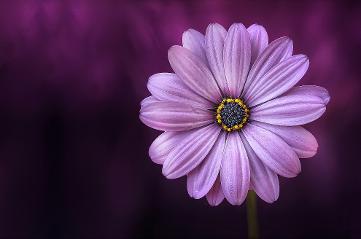Gathering The Mind
Gathering the mind could also be termed focused awareness. In some traditions its referred to as fixation but I feel that word can make us think of obsession. In short its the ability to calmly focus the mind on one thing without distraction. I think for most people this is seen as a positive outcome of meditation that is worth striving for. So lets delve into this idea in a little more depth and see how Master Si Ma can enlighten us on this topic.
The third passage starts with the phrase,
"The mind is the ruler of the body, the controller of the 100 spirits. Stillness of the mind can create intelligence, restlessness of the mind can create confusion"
In this phrase spirits just means consciousness, but it does hint that our consciousness may be divided. Within this understanding all things have spirit, for example, your liver has its own spirit as does your heart, or your tendons and muscles. We're are being advised to combine our spirit into one thing that can be focused upon one goal. You may think of these "spirits" as archetypal figures within you, one may be that critical voice or the nurturing voice etc. I have a number of friends who practice psychology and psychotherapy, one in particular follows a theory called internal family systems which also uses this concept of creating internal harmony between different aspects of our self. The goal we are looking for is to be unified in our approach, our full awareness is used and focused upon one thing.
So I hear you call, what is the one thing?
The one thing would be considered silence or emptiness. I know, I know that sounds boring but this is merely part of a process for you to ultimately experience who or what you are. Silence is the gateway into emptiness and from here all things are possible.

So what advice does Master Si Ma share with us through out the rest of the text. First he lets us know this process is possible, that we can all return to the source and in so doing regain vitality and embrace life again. To achieve this goal we must let go of the supports our heart has become accustomed to. In this sense supports are all those little things we base our life upon. Those things that make us feel safe and grounded, that anchor us into the world that surrounds us through the perspective of the mind or ego. This perspective is seen as untrue or an illusion. This is why over time the supports fail us and need to be changed again and again. while we hold on to these silence and emptiness can not be truly entered. If we can achieve this the heart will be free from agitation and can then truly immerse itself into the moment.

Whoever we are we all have our supports, our walking sticks that help us to traverse the sometimes rocky path of life. Within Taoist thought this is seen as an essential part of life, so you'll be relieved to hear you can keep your walking stick, for a while at least. Meditation is a process and just like a child learning to walk it can take time, during that time keeping some supports will be essential.
Overtime you'll need the walking sticks less and less, in the mean time try to pick ones that don't hurt you physically or mentally. Choose your walking sticks wisely as some will break easier than others and some will lead you down troublesome paths. An example which Master Si Ma mentions is our group of friends. The more time we spend with people the more we often pick up characteristics and traits, just as an animal can be tamed by being around humans our nature can be effected by those we see on a regular basis, as such choose your friends accordingly. I'd like to say here that this is not a moral judgment, friends aren't labelled as bad or good its just another aspect of trying to create the right environment for your goal.
Our ultimate goal is to free our hearts, the more we can accomplish this the happier and more vital we will feel. In the text the analogy of a famers field is used as an example. If the field is riddled with weeds the crop will not be able to take root and so will not flourish. In our case the weeds may be judgement, excessive thought or worry.
Of course if life is good you may not need to feel happier or more vital, this is acknowledged within Taoism. A troubled life can often be the seed to seeking something else, however the Taoists also give a warning that those calmer waters we may find our self in now can easily change to wild rapids. So if you find yourself in calmer waters that's the perfect time to practice so when the rapids finally come you know how to traverse them.
One theme which reoccurs again and again throughout the text is naturalness, to not force the process. In a practical sense this means during meditation allow thoughts to rise and fall in a natural way, don't be to keen to dispel them, trying to hard is a sure way to fail. If we reject thoughts we may come to see them as bad and this is not the case.

To truly enter silence and emptiness judgment must be let go, as such thoughts are not bad, silence is not good. Many people along the meditation path can become almost addicted to meditation. Preferring the bliss of emptiness to everyday life, this also is considered a mistake. At this point silence has become the new walking stick, certainly a healthier stick to be sure but still a support to lean upon. Many traditions may stop at achieving emptiness but Taoism asks you to let that go too. Don't crave emptiness or see it as preferable to everyday life, again it is just a tool to understand who or what you are. This is why the Taoist Masters will say, " first let go of the mundane and then let go of the sacred"
Of course if you've already reached this stage you're probably not reading this :-) so for the rest of us mere mortals what can we learn from this? For me it shows that although in words meditation is simple in practice it can be confusing and lead to many wrong paths. This in itself maybe isn't a bad thing as we learn as we go. However it does tell us that starting on the right path is important and the less complex that path is the better. This is why its recommended at first just to follow the breath don't worry about hand positions, how you're seated or mantras, just follow the breath and allow the process to unfold naturally. In this way we limitthe wrong turns and allow the process to unfold by itself.

This advice reminds me of an old Taoist saying, "If you want the flower to bloom water the roots not the flower"
So in short my friends keep it simple, don't judge what you experience just allow and observe and the eventually the flower will open all by itself.
I hope you've found this little discussion useful for your practice. You may wish to ask yourself what are my supports? what are my walking sticks? Are they healthy for you? The deeper aspects of meditation may test you in unexpected ways but may produce unexpected benefits. Enjoy your practice andIf you have any questions or comments please feel free to get in touch.